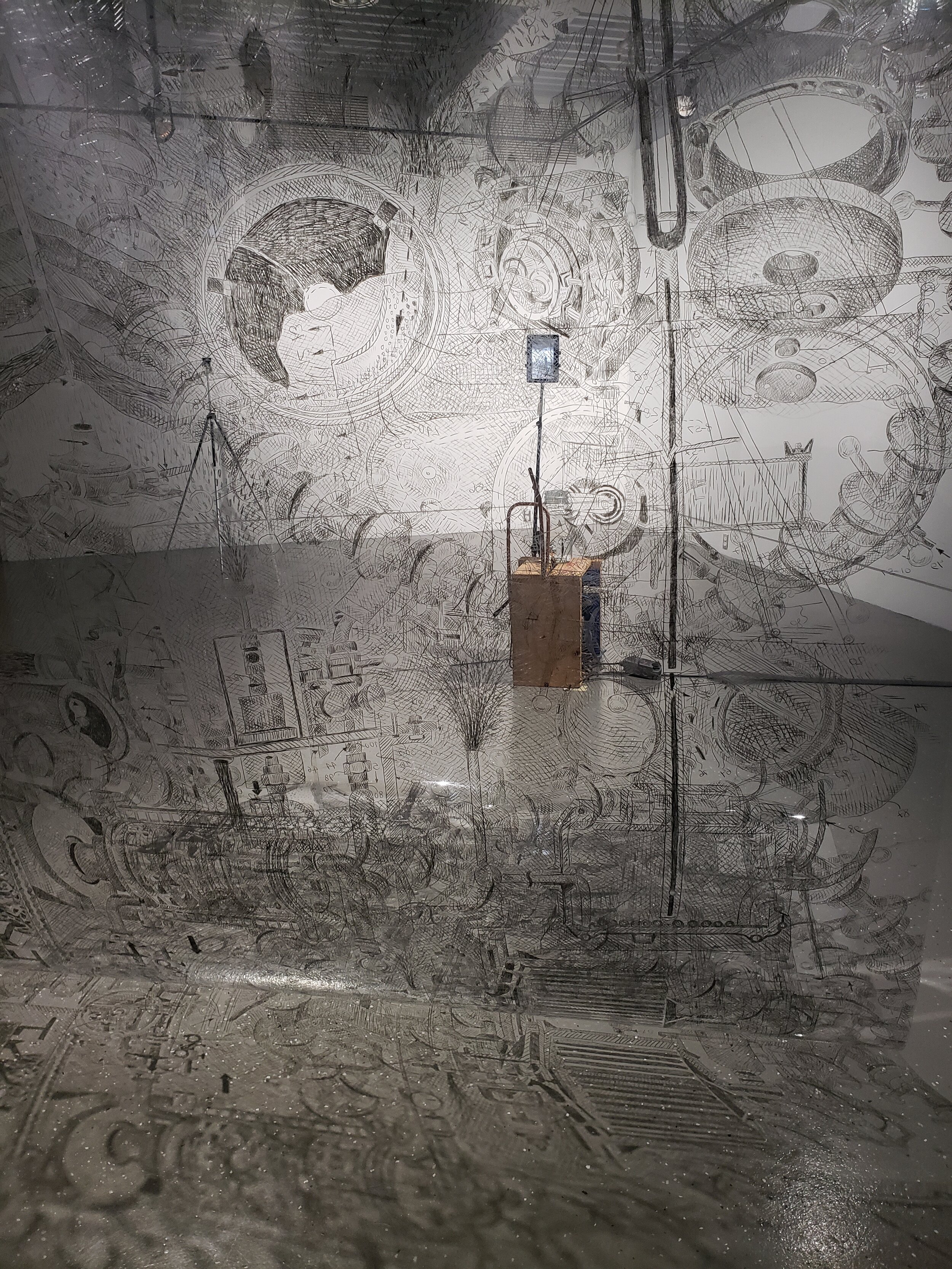
Lindsay Kirker // This is a Love Story
This is a Love Story at the Alternator Centre for Contemporary Art, November 5- December 18, 2021.
This is a Love Story was a response to internal exploration and external observation by artist Lindsay Kirker. The paintings took their cue from the rapid expansion of the urban landscape, surveying a curiosity and fascination with the built environment and a concern for the nature that surrounds us.
A need for stability manifests itself through an attraction to structure. Considering most of our time is spent in the city, these spaces inform and influence us. A sense of order is established through line, grid, and repetition, assuming pattern and stability. This suggests that life unfolds linearly, that we take the same unconscious routes, among clearly defined paths and that there is an order between our experience and the people we come into contact with. The painting reflects the human mind and spirit, intuition and behaviour, perhaps more spontaneous encounters that occur outside of these assumed patterns of activity.
This is a Love Story confronted the ideas and structures we put into place in order to protect ourselves from uncertainty. Dreamscapes were collaged together using the everyday, often seen as banal, to evoke a philosophical reading of the ever-expanding metropolis. How we build represents what we value. Materials used and decisions made will embed themselves in the layers of the earth and the strata of human history. The focus of this work transcends prefabricated concrete slabs constructed to contain and instead, examines the foundations of Being. When integrated with nature, the city’s infrastructure acts as a space for contemplation; the individual and collective journey, and the act of rebuilding.
Lindsay Kirker is a painter and recent Master of Fine Arts graduate from The University of British Columbia Okanagan campus. In her work she is interested in finding a balance between realism and abstraction with emphasis on human ethics and moral responsibility, specifically in the context of the present environmental crises. Over the last several years, Kirker’s work has reflected a search for stability during a time of uncertainty, the city's infrastructure has served as a poetic metaphor for this endeavour. An emerging artist and recipient of the 2019 Audain Foundation Travel Award and Joseph-Armand Bombardier Canada Graduate Master’s Award, Kirker has exhibited work throughout British Columbia and Alberta. She is presently settled on the traditional territory of the Syilx/Okanagan Peoples in British Columbia, Canada.























